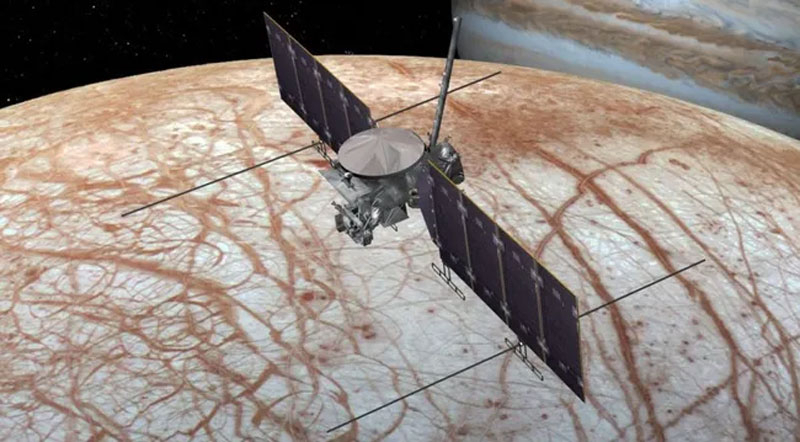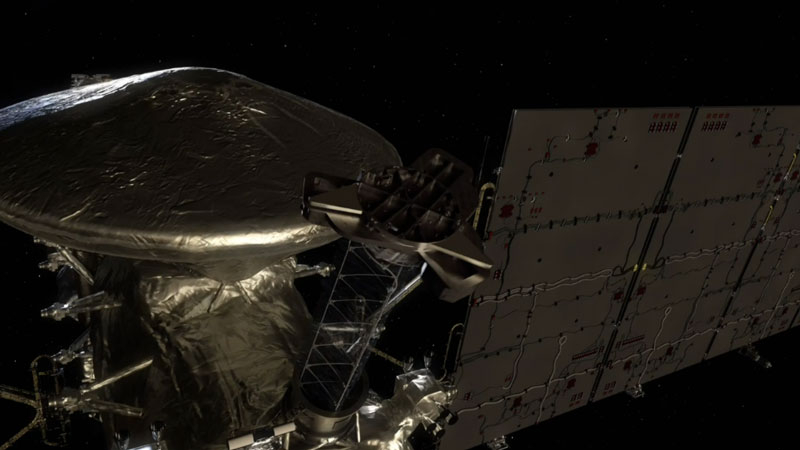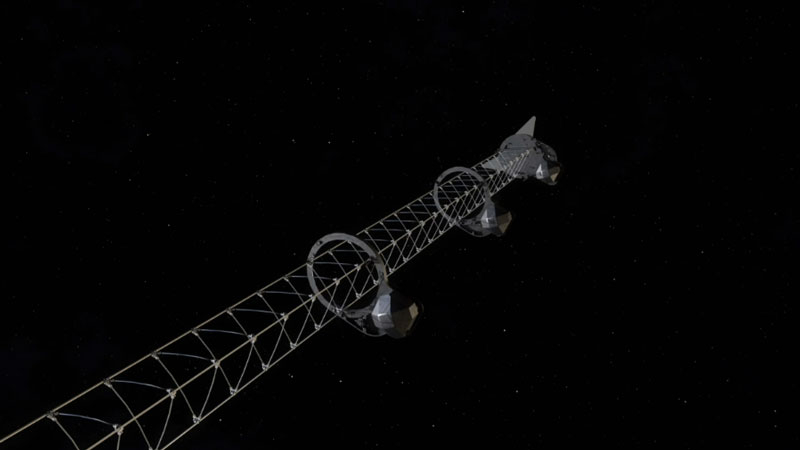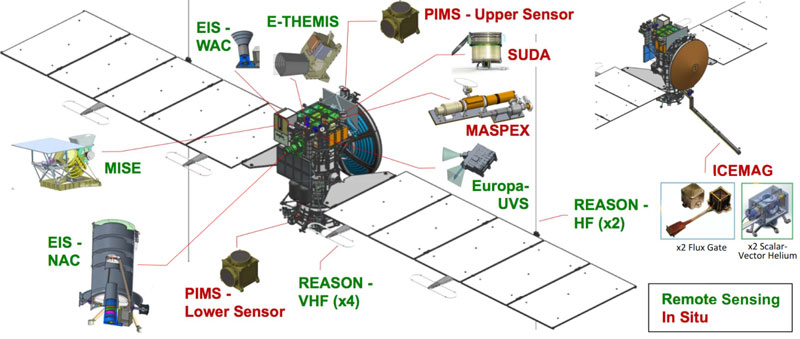The team of NASA’s Europa Clipper mission to search for the sub-ice ocean and life on Jupiter’s moon Europa has completed extending all of the station’s antennas. Somewhat earlier, the station unveiled two huge solar panels with a span of 30 meters. Compared to these batteries, the 8.5 and 17.6 m long antennas look more modest, but without them the main goal of the mission could not be achieved, so the successful deployment of these elements became key to the future scientific work of the station.

Image source: NASA
Europa Clipper carries nine scientific instruments. The ICEMAG magnetometer will directly search for the subglacial ocean and determine its salinity, as well as indirect suitability for the emergence of biological life in it. Its 8.5 m long boom was pulled out of the container and successfully deployed to its full length.

Beginning to extend the magnetometer boom
The station also deployed subsurface radar antennas. Two of them – REASON HF, each 17.6 m long, are placed perpendicular to the solar panels on their leading edge, and four others – 2.76 m REASON VHF – are installed on the trailing edges of the solar panels, two for each.

8.5 m boom extended
The NASA team tested the operation of each of these two instruments shortly after the boom and antennas were deployed. The remaining seven scientific instruments on board Europa Clipper will be tested alternately in December 2024 and January 2025. These include optical and infrared cameras, an infrared spectrometer, an ultraviolet spectrograph, an ionospheric (plasma) instrument, a mass spectrometer, and a dust sensor and a separate instrument for studying Europa’s gravitational field.

At the moment, the station has flown 20 million km from the Earth. It was launched into space on October 14. She reached a speed of 35 km/s. But this is not enough to arrive in the Jupiter system on time. On March 1, 2025, Europa Clipper will reach the orbit of Mars and perform a gravity assist maneuver there—flying around the planet to gain higher speed. Along the way, the operation of the station’s infrared devices will be checked.
In December 2026, the station will perform another gravity assist maneuver, but this time close to the Earth. This passage will allow the station’s magnetic sensors to be calibrated. After this, Europa Clipper will travel to Jupiter, arriving in its system in 2030. Close flybys of Europe will begin in 2031. The station will make 49 close passes of the satellite with a minimum approach of 25 km.